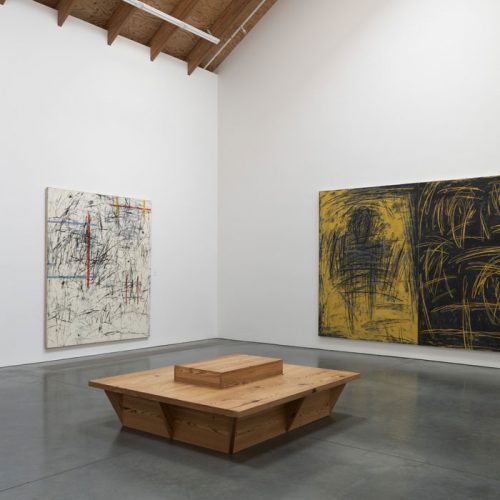“Louisa Chase: Below the Surface,” a current exhibition at the Parrish Art Museum in Water Mill, N.Y., is the first retrospective of the neo-expressionist and new image painter and printmaker. Curated by Andrew Saluti, assistant professor and program coordinator of the graduate program in museum studies in the College of Visual and Performing Arts’ School of Design, the exhibition is a survey of 40 years of artmaking and the first critical review of the artist’s work. It includes a selection of paintings and prints that document Chase’s unique and under-appreciated style dating as early as her time as a student at Syracuse University in the early 1970s.

“Louisa Chase: Below the Surface” is presented in collaboration with Hirschl & Adler Modern, New York City; the Parrish Art Museum; and the Syracuse University Art Collection. Displayed in conjunction with a seven-gallery installation theme of “Every Picture Tells a Story,” the work is on view at the Parrish through October 3.
Saluti began working with Chase before her death in 2016.
“I was first attracted to Chase’s work through our shared professor of printmaking, Don Cortese. He regularly donated student work to the art collection on campus, and her prints stood out immediately,” he explains. “I was drawn to the pictographic and playful nature of her etchings, as well as her clear interest in innovative techniques and experimentation, and began to collect additional works for SUArt. Chase is one of the few female painters to gain prominence during the resurgence of painting in the 1980s.”
During his time as the assistant director for the SUArt Galleries, Saluti facilitated acquisitions that contributed to the largest institutional collection of Chase’s artwork. In addition, the Special Collections Research Center at Syracuse University Libraries is the home of the artist’s papers, central to the curator’s research.
“Having access to so much primary resource material—journals, records and early sketches—proved vital to the interpretation of her work and was the ultimate catalyst of the curatorial process,” Saluti says.
“Louisa Chase’s work embodies an important moment in post-war and contemporary art,” explains Ted Holland ’03, artist manager and exhibition coordinator at Hirschl & Adler Modern and gallery representation for the estate of Louisa Chase. “Her emphasis on expression and expressionism, on narrative and on the technical side of painting place her in a larger, broader art historical context as well. What is most exciting is how the work is viewed today. Chase anticipated many of today’s issues in painting brought on by the digital age, like the role and use of a symbol and the collapse of pictorial space.”
Saluti aims to travel the exhibition nationally after its run in the Hamptons. His research on Chase persists as he continues to work on the artist’s catalog raisonné, a comprehensive annotated compendium of an artist’s complete output, and additional exhibitions focused on the artist’s prints and works on paper.
###
